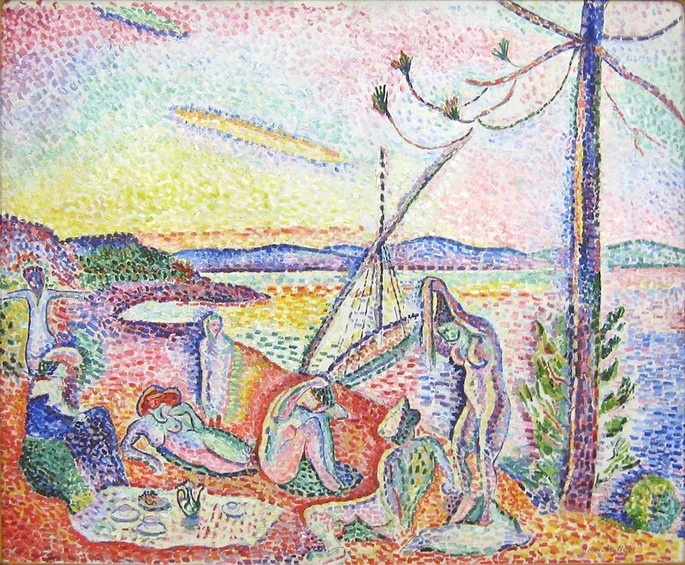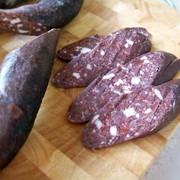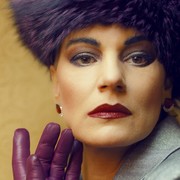Matisse was born in Le Cateau-Cambrésis, in northern France, the oldest son of a prosperous grain merchant. In 1887 he went to Paris to study law. He first started to paint in 1889, during a period of convalescence following an attack of appendicitis, discoverimg "a kind of paradise" as he later described it, and decided to become an artist, deeply disappointing his father.
In 1891 he returned to Paris to study art and became a student of William-Adolphe Bouguereau and Gustave Moreau. Initially he painted still lifes and landscapes in a traditional style, at which he achieved reasonable proficiency. Matisse was influenced by the works of earlier masters such as Jean-Baptiste-Siméon Chardin, Nicolas Poussin, and Antoine Watteau, as well as by modern artists, such as Édouard Manet, and by Japanese art.
In 1896 and 1897, Matisse visited the Australian painter John Peter Russell on the island Belle Île off the coast of Brittany. Russell introduced him to Impressionism and to the work of van Gogh, who had been a friend of Russell but was completely unknown at the time. Matisse's style changed completely. He later said "Russell was my teacher, and Russell explained colour theory to me."
In 1898, following the advice of Camille Pissarro, he went to London to study the paintings of J. M. W. Turner and upon his return to Paris in February 1899, Matisse immersed himself in the work of others and went into debt from buying work from painters he admired. In Cézanne's sense of pictorial structure and colour, Matisse found his main inspiration.
Many of Matisse's paintings from 1898 to 1901 make use of a Divisionist technique he adopted after reading Paul Signac's essay, "D'Eugène Delacroix au Néo-impressionisme". His paintings of 1902–03, a period of material hardship for the artist, are comparatively somber and reveal a preoccupation with form and he devoted much of his energy to working in clay, completing The Slave in 1903.
Fauvism
The movement as such lasted only a few years, 1904–1908, and the leaders of the movement were Matisse and André Derain. The former's fondness for bright and expressive colour became more pronounced after he spent the summer of 1904 painting in St.Tropez with the neo-Impressionists Signac and Henri-Edmond Cross. In that year he painted the most important of his works in the neo-Impressionist style, Luxe, Calme et Volupté, which influenced other artists like Raoul Dufy (see our former article).
In 1905 he travelled southwards again to work with André Derain at Collioure. His paintings of this period are characterised by flat shapes and controlled lines, using pointillism in a less rigorous way than before.
The paintings expressed emotion with wild, often dissonant colours, without regard for the subject's natural colours. Matisse's Woman with a Hat, was bought by Gertrude and Leo Stein, the artist's morale improved considerably.
The decline of the Fauvist movement after 1906 did not affect the career of Matisse; many of his finest works were created between 1906 and 1917, when he was an active part of the great gathering of artistic talent in Montparnasse, He continued to absorb new influences.
He travelled to Algeria in 1906 studying African art and Primitivism. After viewing a large exhibition of Islamic art in Munich in 1910, he spent two months in Spain studying Moorish art. He visited Morocco in 1912 and again in 1913 and while painting in Tangiers he made several changes to his work, including his use of black as a colour. His frequent orientalist topics of later paintings, such as odalisques, can be traced to this period. The effect on Matisse's art was a new boldness in the use of intense, unmodulated colour, as in L'Atelier Rouge (1911).
Matisse had a long association with the Russian art collector Sergei Shchukin. He created one of his major works La Danse specially for Shchukin as part of a two painting commission, the other painting being Music, 1910.
Around April 1906 he met Pablo Picasso, who was 11 years younger than Matisse. The two became lifelong friends as well as rivals and are often compared. One key difference between them is that Matisse drew and painted from nature, while Picasso was much more inclined to work from imagination. The subjects painted most frequently by both artists were women and still life, with Matisse more likely to place his figures in fully realised interiors. Matisse and Picasso were first brought together at the Paris salon of Gertrude Stein and her companion Alice B. Toklas. During the first decade of the twentieth century, these Americans in Paris were important collectors and supporters of Matisse's paintings.
In Nice
In 1917 Matisse relocated to Cimiez on the French Riviera, a suburb of the city of Nice. His work of the decade or so following this relocation shows a relaxation and a softening of his approach. This "return to order" is characteristic of much art of the post-World War I period and can be compared with the neoclassicism of Picasso and Stravinsky as well as the return to traditionalism of Derain. While this work was popular, some contemporary critics found it shallow and decorative.
In the late 1920s Matisse once again engaged in active collaborations with other artists. He worked with not only Frenchmen, Dutch, Germans, and Spaniards, but also a few Americans and recent American immigrants.
After 1930 a new vigor and bolder simplification appeared in his work. American art collector Albert C. Barnes convinced him to produce a large mural for the Barnes Foundation, The Dance II, which was completed in 1932; This move toward simplification and a foreshadowing of the cutout technique are also evident in his painting Large Reclining Nude (1935). Matisse worked on this painting over a period of several months and documented the progress with a series of 22 photographs which he sent to Etta Cone.
In the 1940s he also worked as a graphic artist and produced black-and-white illustrations for several books and over one hundred original lithographs at the Mourlot Studios in Paris.
Diagnosed with abdominal cancer in 1941, Matisse underwent surgery that left him chair and bed bound. Painting and sculpture had become physical challenges, so he turned to a new type of medium. With the help of his assistants, he began creating cut paper collages, or decoupage. He would cut sheets of paper, pre-painted with gouache by his assistants, into shapes of varying colors and sizes, and arrange them to form lively compositions. Initially, these pieces were modest in size, but eventually transformed into mural or room-size works. The result was a distinct and dimensional complexity art not quite painting, but not quite sculpture.
His Blue Nudes series feature prime examples of this technique he called "painting with scissors"; they demonstrate the ability to bring his eye for colour and geometry to a new medium of utter simplicity, but with playful and delightful power.
In 1947 he published Jazz, a limited-edition artist's book of about one hundred prints of colourful paper cut collages, accompanied by his written thoughts. Tériade, a noted twentieth-century art publisher, arranged to have Matisse's cutouts rendered as pochoir (stencil) prints.
Matisse was much admired and repeatedly referred to by the Greek Nobelist poet Odysseas Elytis, he had painted the wall of the dining room of Tériade's residence, the Villa Natacha in Saint-Jean-Cap-Ferrat, which Elytis also mentioned in his poems.
In 1951 Matisse finished a four-year project of designing the interior, the glass windows, and the decorations of the Chapelle du Rosaire de Vence, often referred to as the Matisse Chapel.
In 1952 he established a museum dedicated to his work, the Matisse Museum in Le Cateau, and this museum is now the third-largest collection of Matisse works in France.
Matisse's final work was the design for a stained-glass window installed at the Union Church of Pocantico Hills near the Rockefeller estate north of New York City, whose installation was completed in 1956.
Matisse died of a heart attack at the age of 84 in 1954. He is interred in the cemetery of the Monastère Notre Dame de Cimiez, near Nice.
Museum
The Matisse Museum in Nice, Cimiez has been welcoming vistors to its collection of works left by the artist to the city of Nice where he lived from 1918 until 1954.
More about it next week.
VIDEO: https://www.youtube.com/watch?v=l3L8tNBYUIE%20%20





























